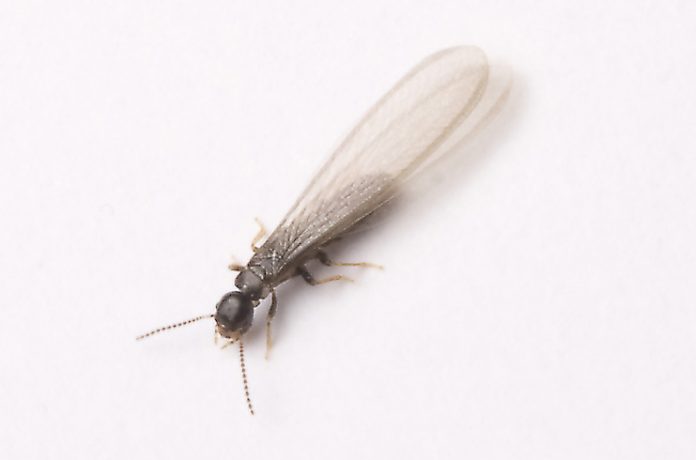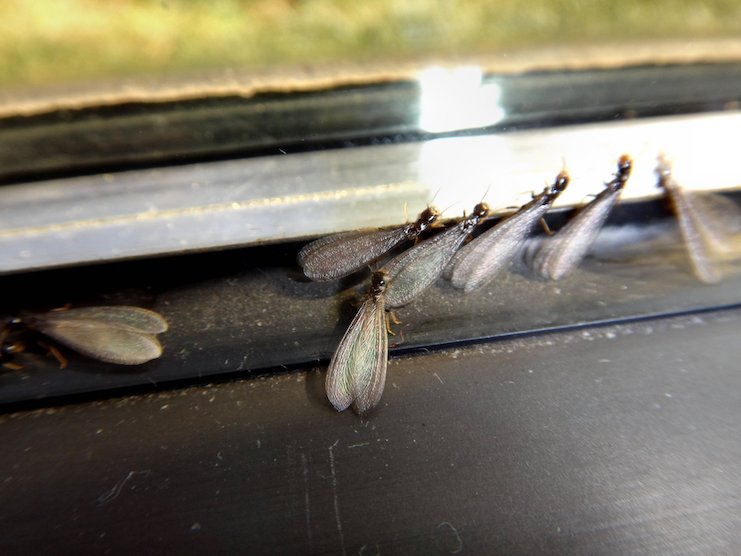
Termite infestations may not be a top-of-mind issue for many lodging professionals, but that can change quickly when swarming season begins in late spring or early summer. Commercial structures are just as likely to become infested with termites as residential structures, but facility managers often fail to realize the risk swarming termites can pose for a business. Even buildings with metal framing and concrete construction are susceptible to termite swarms and termite damage. While most people are aware of the damage that termites can cause and the expense of treatment and repair costs, many are not aware of simple, preventative measures facility owners can take to reduce their risk of a termite infestation.
What are swarming termites and what do they look like?
Swarming termites are the reproductive members of a termite colony that leave their mature colony to start new ones. While termites are usually associated with structural damage or destruction, swarming termites do not bite, sting, or eat wood. Instead, they travel in swarms in the air for a couple of hours—with each individual swarmer taking brief flights that last only a few minutes—as they travel to find a mate.
Thousands of termite swarmers are produced annually to proliferate the species and start new colonies. The large number of swarmers is why termites are such a nuisance in facilities. When termites swarm, it is usually in a localized area of a structure. Depending on the species, there can be thousands of them.
After a short flight of just a few feet, they break their wings from their bodies and pair with a mating partner, traveling on foot to find a suitable place to start a new colony. These swarming termites are most often unsuccessful in finding “that perfect spot” indoors and will die within a few hours from dehydration.
Preventing further termite damage
Termite swarmers are just one of the members of a termite colony. While they are mostly a nuisance, they indicate that the rest of the colony (including those that eat wood) have probably entered the building’s envelope as well. Most of the members of a termite colony remain hidden, constantly eating any wood or other cellulose-containing material they can find. This feeding behavior can damage to wooden structural components of a building and can destroy various materials and furnishings within.

This is where the major cost of a termite infestation often lies. In commercial buildings, termite damage repairs can reach into thousands of dollars, not accounting the downtime for rooms that are under repair, negative customer experiences, and damage to reputation. All in all, termites are much more than just an inconvenience—they can cause major disruption to businesses and have significant budget impacts.
How to combat a termite infestation
The first response many facility managers have to a termite swarm is to immediately use an aerosol spray. Unfortunately, most aerosol products do not include termites as “target pests,” so they may prove ineffective. Sprays may also make termites stick to surfaces, making cleanup difficult, and can stain building materials.
To remove termite swarmers, lodging professionals should use a vacuum cleaner to suck up the pests. Most will die in this process, however, it is still best to empty the vacuum cleaner and dispose of the bag immediately after treating the area. When termites start swarming inside of a building, they often trickle out of a tiny hole in a wall or ceiling in the area over a span of several hours. To be sure all termite swarmers have been removed, it may be necessary to vacuum multiple times.
However, like any pest challenge, identifying and treating for termites can be difficult and complex. The best way to prevent the pain of a termite attack is to engage a professional pest control company to inspect the facility, evaluate the situation, and provide a termite control plan that fits.











